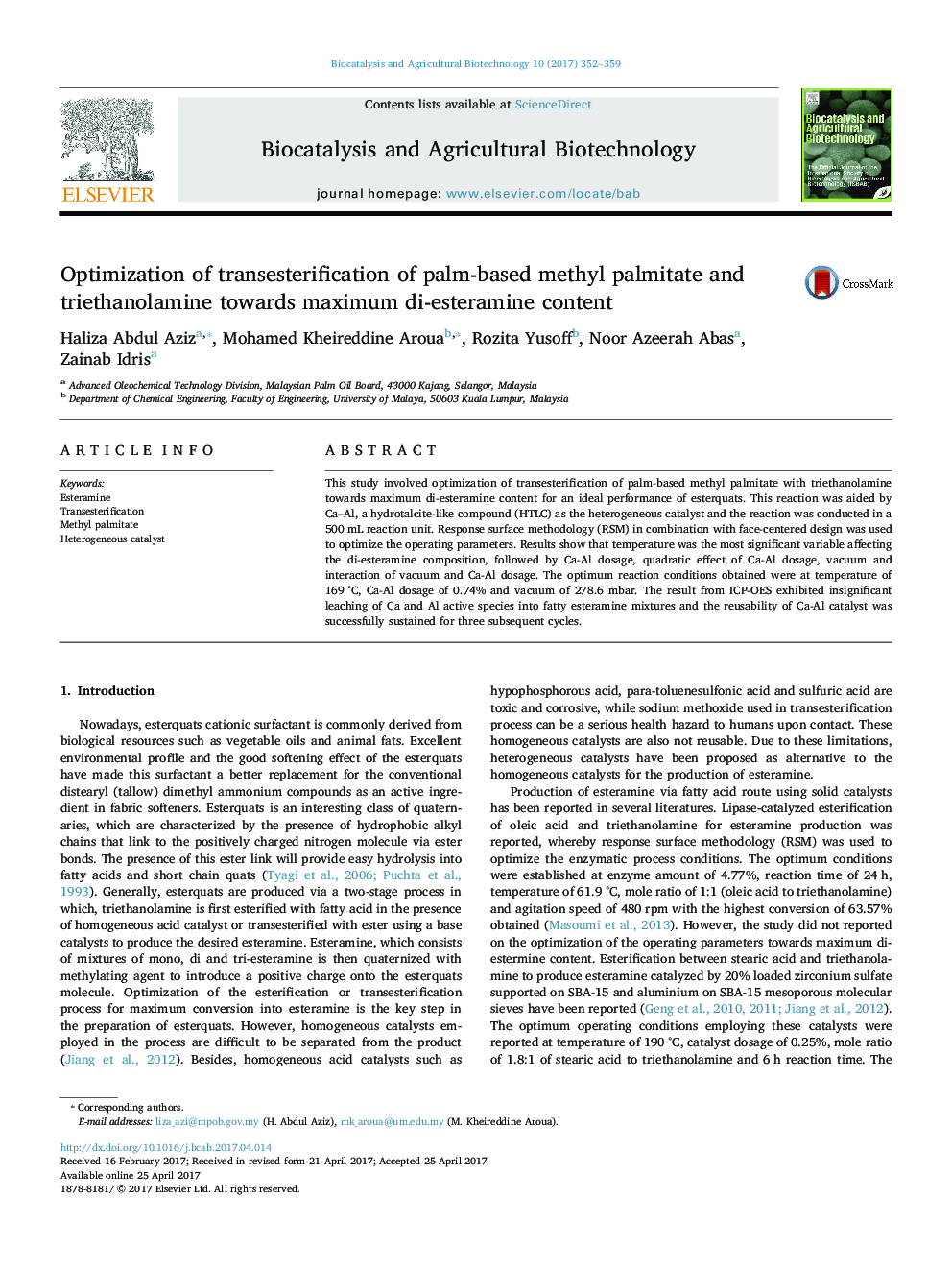| Article ID | Journal | Published Year | Pages | File Type |
|---|---|---|---|---|
| 5520456 | Biocatalysis and Agricultural Biotechnology | 2017 | 8 Pages |
This study involved optimization of transesterification of palm-based methyl palmitate with triethanolamine towards maximum di-esteramine content for an ideal performance of esterquats. This reaction was aided by Ca-Al, a hydrotalcite-like compound (HTLC) as the heterogeneous catalyst and the reaction was conducted in a 500 mL reaction unit. Response surface methodology (RSM) in combination with face-centered design was used to optimize the operating parameters. Results show that temperature was the most significant variable affecting the di-esteramine composition, followed by Ca-Al dosage, quadratic effect of Ca-Al dosage, vacuum and interaction of vacuum and Ca-Al dosage. The optimum reaction conditions obtained were at temperature of 169 °C, Ca-Al dosage of 0.74% and vacuum of 278.6 mbar. The result from ICP-OES exhibited insignificant leaching of Ca and Al active species into fatty esteramine mixtures and the reusability of Ca-Al catalyst was successfully sustained for three subsequent cycles.
